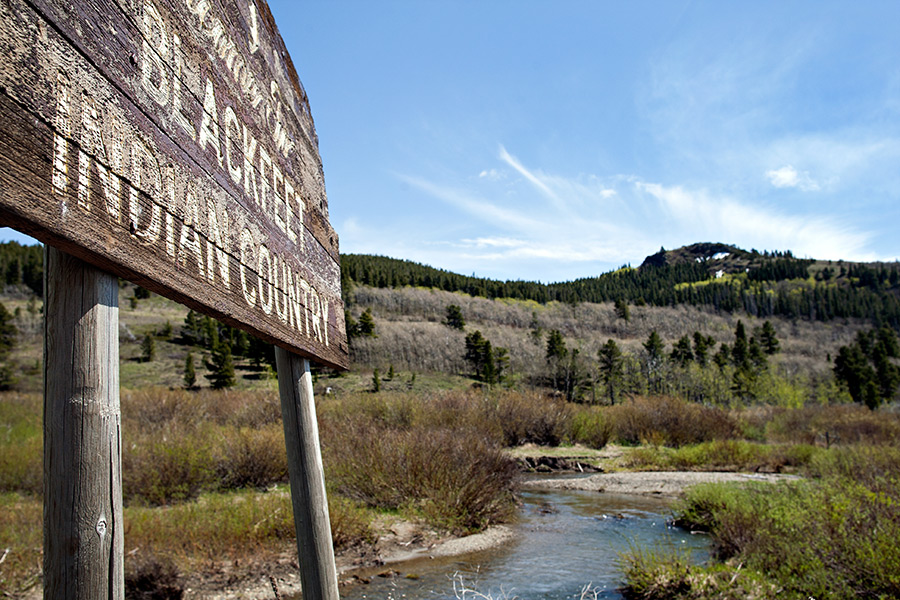The Blackfeet Nation’s quick and targeted response to the COVID-19 pandemic, including a strictly enforced stay-at-home order following an outbreak in the early fall of 2020, likely prevented further spread of the virus, according to a study released this month by the Centers for Disease Control and Prevention (CDC).
Data summarized in the CDC’s weekly Morbidity and Mortality Report on April 9 details how the tribe’s actions last summer kept COVID-19 cases to a minimum, and how when the tribe loosened restrictions and cases went up in September, an even more aggressive response quickly tamped down that outbreak. The study was based on data collected between June and December 2020 and analyzed by a team of scientists and medical professionals.
In summary, the study’s authors credited the tribe’s response to the virus for keeping case totals low and concluded that “steep declines in COVID-19 incidence in the Blackfeet Tribal Reservation might not have occurred without widespread and consistent enforcement of the mandate for mask use in public and stay-at-home orders.”
As of April 21, there were no active cases on the Blackfeet Reservation, where nearly 8,000 people have already been vaccinated, almost 80% of the total population and virtually the entire vaccine-eligible population. Since the start of the pandemic, 1,386 cases of COVID-19 have been confirmed and 48 tribal members have died.
The Blackfeet Tribal Business Council (BTBC) addressed the COVID-19 pandemic head on last March, implementing more restrictive measures than almost anywhere else in the state. Even before the virus was detected on the reservation, schools were closed, ceremonial events were canceled and operational limits were placed on local businesses.
Shortly after the first COVID-19 case was reported on the reservation on June 16, the BTBC made the decision to close the east entrance to Glacier National Park through the end of the tourist season, and local schools implemented remote learning through the fall semester. By June 29, less than two weeks after the first case, the reservation was placed under a mandatory stay-at-home order that lasted through July 31, with violators subject to a fine of up to $500. During the month of July, COVID-19 was nearly non-existent, with just 0.10 daily cases per 1,000 people.

On July 31, campgrounds on the reservation opened to residents and the mandatory stay-at-home order expired, and while cases remained low through August, by September the virus was surging. The CDC study notes that two weekends of events — the Northwest Montana Fair and Rodeo in Kalispell from Aug. 19-23 and Labor Day celebrations from Sept. 5-7 — preceded a major spike in the following weeks. Daily cases peaked on Oct. 5 at 6.40 per 1,000 people, a 63-fold increase from July.
As cases crept toward that peak, tribal leaders approved a new stay-at-home order subject to “strict enforcement” on Sept. 28. That stay-at-home order came with penalties of up to three years in jail or a fine of up to $5,000 for violators. The effects of the second lockdown halted the rise in cases by Oct. 5, and a little over a month later, on Nov. 7, the daily case incidence was back down to 0.19 per 1,000.
The report does not directly connect the Northwest Montana Fair and Rodeo or Labor Day gatherings to the September spike, but it does present evidence that young people contracted the virus in August before it spread to older age groups. Cases among residents age 5-17 and 30-39 began to increase on Aug. 9, and those age groups reported the most cases throughout the month of August. Cases among the 18-29 and 50-64 year-old age groups peaked during the week of Sept. 27, with those 50-64 reporting the highest case incidence in September.
In addition to stay-at-home measures, Blackfeet officials also worked to reach residents impacted by the pandemic in smaller ways, the study notes. In the weeks approaching Thanksgiving, traditional dinners were distributed to families to keep traffic out of grocery stores, and during the second mandatory stay-at-home order, patients unable to isolate at home were given temporary housing at two local hotels. A “COVID-19 dispatch team” also delivered medications and food to community members on an as-needed basis.
The Blackfeet Nation scaled back some pandemic-related restrictions last month, weeks after Gov. Greg Gianforte eliminated all statewide public safety measures, including an indoor mask mandate. The Blackfeet moved to Phase 3 of their reopening plan on March 15, calling the phase a “New Normal” and allowing some indoor activities to resume, albeit at a limited capacity. The reservation still has a mask mandate in place. On March 17, the BTBC announced it was lifting the closure of Glacier Park’s eastern border, citing high vaccine uptake among tribal members.
Native Americans in Montana have been disproportionally impacted by COVID-19, with American Indians/Alaska Natives 2.2 times more likely to contract COVID-19 and 3.8 times more likely to die from COVID-19 compared to a white person, according to a separate CDC study based on data collected between March 13 and Nov. 30, 2020.
